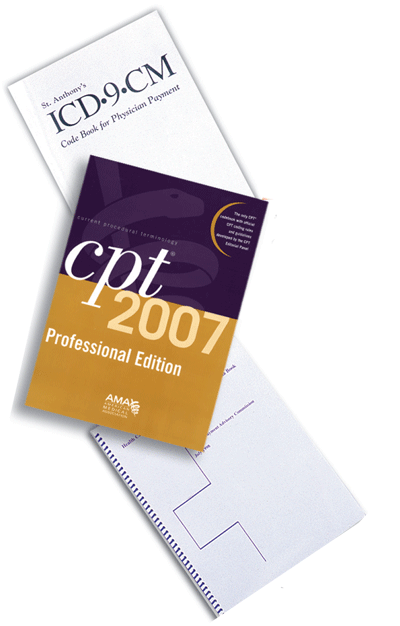 Q: Does Medicare cover the new corneal transplant procedures?
Q: Does Medicare cover the new corneal transplant procedures?
A: Desemet's stripping endothelial keratoplasty (DSEK) or deep lamellar endothelial keratoplasty (DLEK) are new forms of keratoplasty. The term keratoplasty has always been a general term relating to surgery on the cornea, usually referring to a corneal graft procedure. Many cornea specialists are embracing these new procedures due to a shorter postoperative recovery for the patient when compared to traditional penetrating keratoplasty.
The procedure involves a small incision in the cornea through which the surgeon strips away diseased or opacified endothelial corneal cells. Following stripping, harvested endothelium from a donor cornea is placed on the inner surface of the recipient cornea. The patient's compromised cornea clears rapidly once the new endothelium begins to function, and the common postoperative problems of penetrating keratoplasty related to sutures and astigmatism are avoided.
DSEK or DLEK are not considered appropriate for all corneal pathologies; rather they are indicated for corneas with endothelial dysfunction. In cases of anterior corneal disease, such as central corneal opacity (ICD-9 371.03), keratoconus (ICD-9 371.6x) or anterior pigmentation of cornea (ICD-9 371.11), the preferred procedure may be a penetrating or lamellar keratoplasty.
Q: Is there a unique CPT code for these new procedures?
A: No. DSEK and DLEK are key examples of the coding and reimbursement dilemma created by an exciting new procedure. New technology or procedures are introduced to the field of medicine, but are often met with reimbursement roadblocks.
Q: Are there existing keratoplasty codes that can be used for these procedures?
A: No. CPT currently includes several choices to report keratoplasties. The existing codes include:
• 65710 keratoplasty (corneal transplant); lamellar;
• 65730 penetrating (except in aphakia);
• 65750 penetrating (in aphakia);
• 65755 penetrating (in pseudophakia); and
• 65767 epikeratoplasty.
None of these codes precisely describes DSEK or DLEK.
Q: If no code exists, what code should be used to describe these procedures?
A: Until such time as a code is created specifically for these procedures, a miscellaneous code, 66999 (unlisted surgical procedure on anterior segment), is the best code to describe DSEK or DLEK. Instructions exist in the introduction of the CPT handbook about selecting an accurate code to report the service on a claim for reimbursement. It states: "Select the name of the procedure or service that accurately identifies the service performed. Do not select a CPT code that merely approximates the service provided." In short, do not choose the wrong code for the purpose of facilitating reimbursement.
Q: Do Medicare carriers agree and follow the instructions provided in CPT?
A: No. The Medicare program doesn't always follow the instructions in CPT. Two Medicare carriers have published instructions to report DSEK procedures using PK codes (CPT 65730 – 65755). In October 2006, Wisconsin Physicians' Service, the Medicare carrier for
"For Medicare Part B, the new Descemet's stripping procedure may be adequately coded as 65730, 65750 or 65755 (based on the patient's lens status), until such time as a more specific code is released. Coding with an unlisted procedure code such as 66999 is not incorrect, but will trigger delays for additional documentation requests, processing, review and cross-walking of reimbursement."
In December 2006, NHIC Medicare published the same instruction for providers in its
Q: Have other carriers published any different opinions?
A: Yes. Trailblazer Health took a very different point of view. On April 23, 2007, the Trailblazer website included the following instruction:
"Use of DSLEK/DSAEK results in significantly shorter healing time and is covered by Medicare. Providers should bill DSLEK/DSAEK with CPT NOC code 66999 (unlisted procedure, anterior segment of eye). It is suggested that for Part B carrier claims, the operative report be submitted with the claim to help expedite claim payment. CPT code 65730 (keratoplasty, lamellar, penetrating) should NOT be used to bill for DSLEK/DSAEK."
First
With only two Medicare carriers advocating the use of the PK codes, most providers are obliged to use CPT 66999 to identify DSEK procedures. Check local policies frequently for anything new from your carrier as this is an evolving area in reimbursement.
Q: Will Medicare reimburse the physician with the miscellaneous code (66999) for these procedures?
A: Maybe. Physician reimbursement is at the discretion of the carrier on a case-by-case basis. No relative value units exist to describe these procedures. Payment of one claim does not establish a precedent for the next. Additional documentation, such as an operative report, is usually required for claim processing. At the end of the dictation, it is a good idea to describe a comparable procedure, such as PK, that may be used to determine a fair reimbursement.
Q: Will the facility be reimbursed for the procedure using 66999?
A: Under Medicare's Outpatient Prospective Payment System, CPT code 66999 has been assigned to APC-232 for the hospital outpatient department and the allowed amount for 2007 is $373.
ASCs may only receive reimbursement for eligible procedures that meet certain guidelines for safety, the length of the surgical procedure and the pre- and postop recovery time. In 2007, CPT code 66999 is not eligible for an ASC facility payment. CMS has proposed substantial changes to their payment methodology for ASCs beginning in 2008. Unfortunately, the new regulations continue to exclude miscellaneous codes from coverage in an ASC.
Q: Is the corneal tissue paid separately to the hospital?
A: Yes. For hospitals, the Medicare Claims Processing Manual Chapter 4 §200 states, "Corneal tissue will be paid on a cost basis, not under OPPS. To receive cost-based reimbursement hospitals must bill charges for corneal tissue using HCPCS code V2785." The invoice to the HOPD from the eye bank will reflect the handling charges for harvesting corneal tissue as well as any additional processing of the tissue to prepare  the endothelial graft.
the endothelial graft.
Ms. McCune is vice president of the Corcoran Consulting Group. You may contact her at DMcCune@corcoranccg.com.



